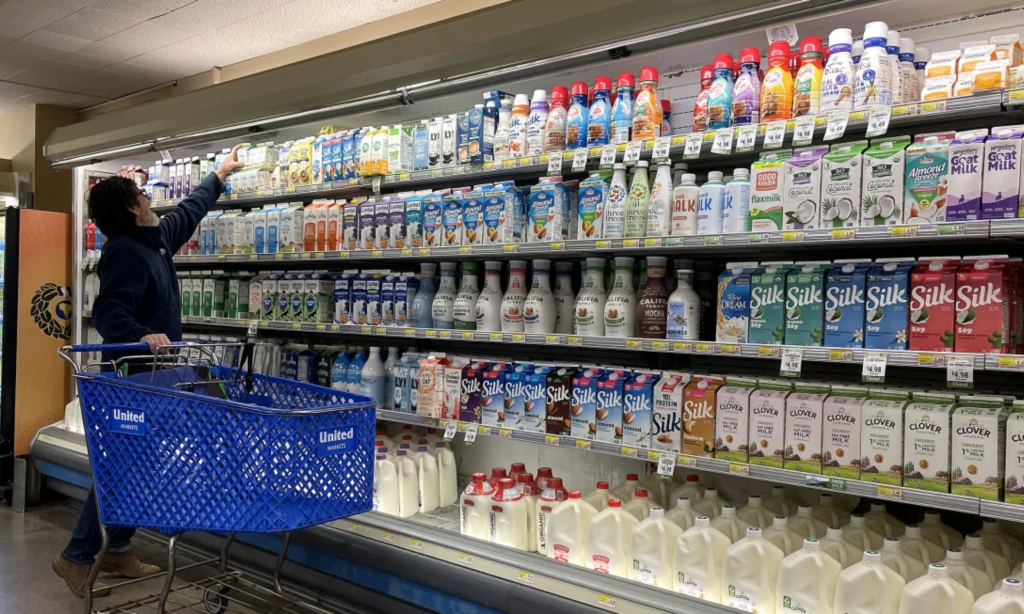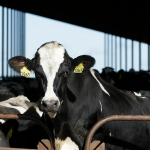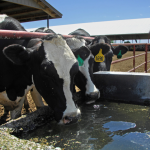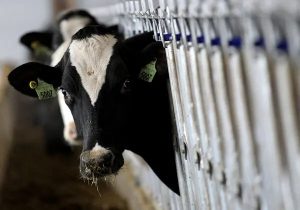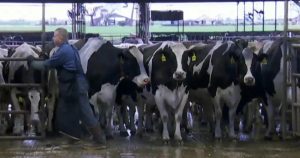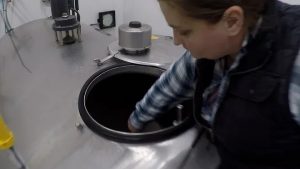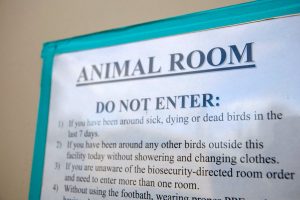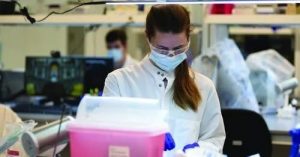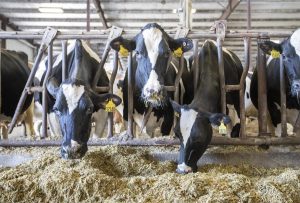
The US Centers for Disease Control and Prevention is partnering with the state of Michigan to begin a highly anticipated study to assess whether workers exposed to infected cattle had themselves become infected. And the US Food and Drug Administration is testing what’s known as flash pasteurization after recent studies raised questions about whether the method neutralizes all infectious virus in milk.
The projects are part of a suite of new research announced by federal agencies on Tuesday to understand the dynamics of H5N1 bird flu, which for the first time jumped from birds to dairy cattle around the beginning of the year. Since late March, more than 120 herds across 12 states have tested positive for the highly contagious infection, which appears to be spreading through contact with raw milk, the US Department of Agriculture confirmed.
“We know this to be spread by contact with milk,” said Dr. Eric Deeble, who is the acting senior adviser for highly pathogenic avian influenza at the USDA.
Deeble said that early on, the movement of cattle was largely driving spread of the infection. But since the USDA ordered cattle to be tested before they could be moved state-to-state in late April, the infection has been ferried between farms on shared equipment and shared workers, according to a recent epidemiological study by the Michigan Department of Agriculture and Rural Development, or MDARD.
“We know that milk has really high viral loads, and so when we’re looking at transmission patterns, that’s a really high risk, it seems,” MDARD Director Dr. Tim Boring said.
How the virus is using humans to hitch a ride — whether through infection or contaminated clothing or skin — isn’t clear yet, Boring said.
“My guess it’s perhaps not truly binary, whether it is on people or in people,” Boring said.
Dairy farmers have been reluctant to let government officials onto their farms forwidespread testing of their herds, and farm workers have shied away from testing, even when they have symptoms. Advocates say workers are reluctant to test since it might mean missing work and pay.
Last week, Michigan said it would pay up to 20 dairy farms a maximum of $28,000 each to participate in research. That financial assistance is on top of funds the federal government is offering.
The offer seems to have worked. On Tuesday, the CDC announced that it had partnered with the Michigan Department of Health and Human Services to launch a study to test the blood of farm workers for antibodies to the H5N1 virus.
“The point of this study is to determine if there is asymptomatic infection” of workers who have been exposed to cows infected with the H5N1 virus, said Dr. Demetre Daskalakis, director of the CDC’s National Center for Immunization and Respiratory Diseases.
The FDA also announced Tuesday that it has started another round of dairy product sampling to address gaps in its previous testing. This time, the 155 products it’s plucking from store shelves will include raw milk cheeses, cream cheese, ice cream and butter, said Dr. Don Prater, acting director of the FDA’s Center for Food Safety and Applied Nutrition.
Earlier this year, FDA’s initial testing of milk and sour cream and other and other kinds of dairy products purchased at grocery stores found traces of virus in 1 out of 5 items sampled. Further testing confirmed, however, that those viral fragments were inactive and couldn’t make anyone sick, leading the agency to declare milk and other dairy products safe to consume, as long as they’re pasteurized.
But two recent lab studies published in the New England Journal of Medicine raised new questions. The studies heated raw, infected milk to the times and temperatures used for flash pasteurization — the most common form of pasteurization in the US — and found that while it greatly reduced levels of infectious virus in milk, it didn’t completely neutralize all of it.
Scientists cautioned, however, that because the experiments didn’t replicate the full flash pasteurization process, including a pre-heating step, more research was needed. Prater said the FDA believes its experiments are closer to the method used in commercial milk processing.
Also on the FDA’s to-do list are studies to measure the persistence of the virus in cheese as it ages, and pooled testing of raw milk samples from dairies.
Prater didn’t give a specific timeline for when the agency would have results from those studies, but said it hope to have the information in the very near future.
